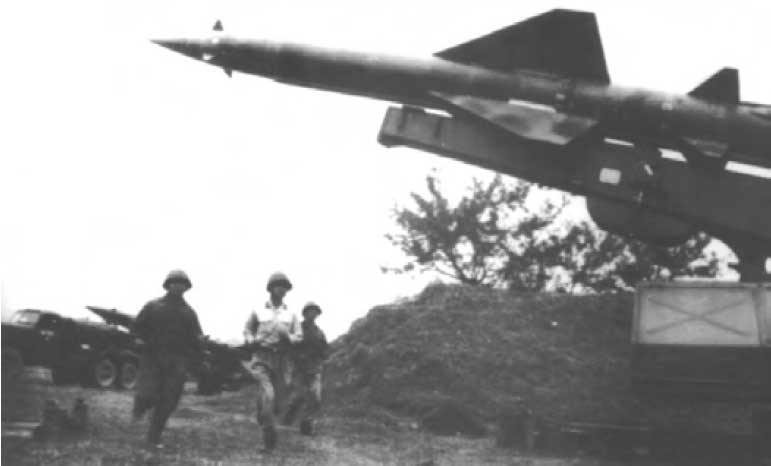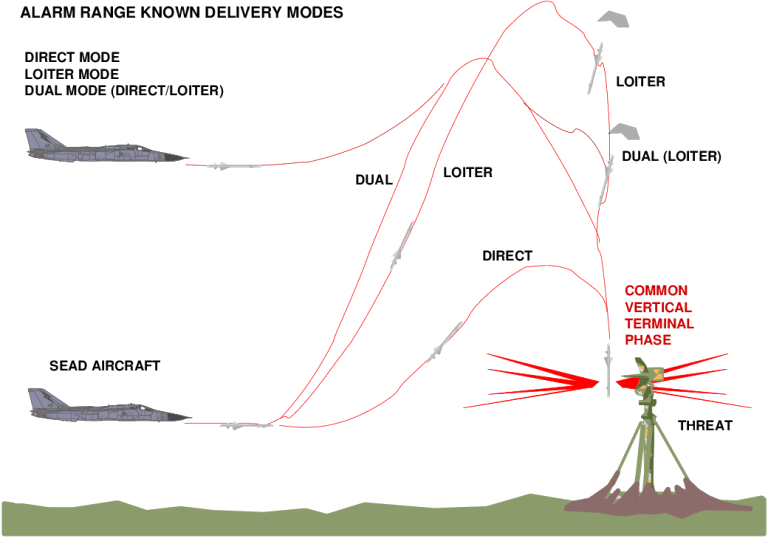Hyvä tietysti, jos tekniikka on kehittynyt 20 vuodessa niin paljon, että nykyään paikannus tapahtuu kaukaakin metrilleen, minkä jälkeen tutkaa voidaan tervehtiä täsmäaseilla.
Balkanin kokemusten perusteella ainakin senaikaiset tekniikat ja taktiikat toimivat heikosti tutkien tuhoamisessa. Wild Wieselit eivät paikantaneet jokaista tutkaa metrilleen ja sen jälkeen pudottaneet JSOW:ia tutkaa vastaan heti ensimmäisenä sotapäivänä. Nato joutui tekemään valtavia panostuksia panostuksia koko sodan ajan (mm. ELSO-koneiden ja n. 750 tutkantuhoajaohjuksen muodossa) ihan vain tutkien lamauttamiseksi.
Jos nykypäivänä homma menee kuin Strömsössä, niin hienoa, mutta olen skeptinen. Ilmatorjuntaohjusjärjestelmiä kehitetään yhä, vaikka moinen "tuomiopäivänteknologia" on jo jenkeillä ja kohta varmaan kiinalaisillakin.
Ajattelin, että tähän olisi ehkä vielä hyvä vastata, mutta sopii varmaan paremmin tähän ketjuun.
Tekniikka on kehittynyt. Mutta, niin on tietysti ilmatorjuntajärjestelmienkin tekniikka. Tämä on perinteistä aseen ja vasta-aseen kilvoittelua, joka tulee jatkumaan ikuisesti.
Näitä asioita on ehkä helpointa ymmärtää, jos otetaan ajallinen perspektiivi näihin asioihin.
Vietnam
Vietnamilaisten pääasiallinen ohjus oli SA-2. Se oli aika massiivinen järjestelmä ja vaati käytännössä kiinteät tuliasemat.
http://www.globalsecurity.org/military/world/vietnam/nva-ad-sam.htm
Jenkkien oli kohtuu helppo rynnäköidä noita vastaan ihan konekivääreillä ja pommittamalla, koska sijainnit olivat tiedossa ja matalalla lentävä rynnäkkökone oli noilta turvassa (toki ympärillä oli sitten muuta konekivääriä ja IT-tykkiä tukena).
Tämä johti siihen, että Vietnamilaiset pyrkivät vaihtamaan sijaintia eri valmisteltujen tuliasemien välillä. Se oli työlästä.
In order to avoid enemy air strikes (American aviation, upon detecting SAM subunits, strove to destroy them by strafing and bombing), SAM battalions changed launching sites after every firing, executing marches of varying distances by their own means. Moves to new launching sites were executed under night conditions. The total time spent in moving from one site to another over a distance of thirty to forty kilometers was ten to fifteen hours. A battalion would spend 2.5 hours to pack-up its equipment and 3 hours to set it up. In addition, approximately v/ 2 to 2.5 hours were devoted to checking and adjusting the equipment.
Moves were also made by radiotechnical troops in order to assure the viability of the radar coverage and equipment. Alternate positions for radar companies were selected at distances up to fifteen to twenty kilometers from the primary ones. The move by radar companies to alternate positions was accomplished during a single night.
With the rise in the number of bombing and strafing strikes against SAM battalion launching sites, especially after American aviation changed over to low altitude actions, three to five small-caliber antiaircraft artillery batteries and three or four antiaircraft machine-gun platoons began to be allocated to each launching site to provide cover. Furthermore, toward the end of 1965, to provide cover for individual installations, anti-aircraft artillery and machine-gun units and subunits began to be employed jointly with SAM battalions, thereby significantly enhancing the effectiveness of the defense of installations. But nevertheless the matter of defending SAM systems against air strikes was not fully solved.
Therefore, in addition to aggressive defense measures, widespread use was made of camouflage by the subunits themselves utilizing materials available at hand. To this end, the positions formerly occupied were often converted into dummy positions by setting up dummy launchers and radars and with imitation missile launches (powder charge bursts with an admixture of brick dust). As a result of the measures taken, combat equipment and personnel were preserved and, furthermore, a considerable number of American aircraft were destroyed, despite the limited number of SAM battalions in the VPA air defense. As a result of the measures taken, combat equipment and personnel were preserved and, furthermore, a considerable number of American aircraft were destroyed, despite the limited number of SAM battalions in the VPA air defense.
Lisäksi noita vastaan ammuttiin AGM-45 Shrike tutkaan hakeutuvia ohjuksia (muutettu Sparrowista).
Shriken idea oli yksinkertainen. Se suuntasi kohti tutkan säteilyä.
Idea toimi, mutta Shrikessä oli paljon puutteita, ja kehitettiin AGM-88 HARM
http://www.ausairpower.net/API-AGM-88-HARM.html
HARM oli monin tavoin teknisesti kehittyneempi, mutta sen toimintaperiaate oli sama. Pari oleellista eroa oli, että sillä oli pidempi kantama, ja EW-järjestelmällä varustettu Wild Veasel kone saattoi havaita tutkan ja ampua Harmin matkaan pitkältä kantamalta ja Harm suunnisti inertianavigoinnin avulla kohti tutkaa, kunnes sai sen itse havaittua vastaanottimellaan.
Bekaan laakso on aika legendaarinen taistelu. Israelilaiset tuhosivat Syyrian ohjuspuolustuksen ja ilmavoimat ilman käytännössä omia tappioita.
https://en.wikipedia.org/wiki/Operation_Mole_Cricket_19
Onnistuminen perustui SEAD operaation osalta siihen, että tiedettiin täydellisesti, mitä IT-järjestelmiä oli missäkin ja mitä tutkataajuuksia ne käyttivät ja miten. Syyrialaiset olivat laiskoja. Wikipedian linkistä voi lukea tarkemmin ssraelilaisten toiminnasta.
Persianlahdellakin HARM toimi muistaakseni ihan kohtuullisesti.
Balkanilla sen sijaan ei mennyt kovin hyvin, koska serbit osasivat asiansa. He pitivät yhtä tutkaa kerrallaan päällä vain tietyn ajan. Käytännössä HARM ei osunut tutkaan, jos se ei ollut päällä. Lisäksi monilla HARMeja laukoneilla koneilla ei ollut kunnon EW-järjestelmää, joka olisi osannut etukäteen paikallistaa tutkan ja syöttää tiedon Harmille.
Taisi olla niin, että Nato ampui satoja Harmeja, mutta ei saanut ilmeisesti (?) vaimennettua yhtäkään serbien tutkaa.
Sen sijaan brittien Alarmeja
https://en.wikipedia.org/wiki/ALARM ammuttiin kuusi. Ja niillä tuhottiin yksi serbien tutka.
Alarmin paljon parempi suorituskyky johtui siitä, että se ampuu itsensä ensin ylös, leijailee hiljalleen sitten laskuvarjon varassa alaspäin ja odottaa että tutka avautuu uudestaan. Kun näin tapahtuu, laskuvarjo irrotetaan, rakettimoottori käynnistetään uudestaan ja kotka iskee saaliin kimppuun.
----
Uusi aika
Ilmatorjuntajärjestelmät ovat kehittyneet huomattavasti. Paikallaan olevista liikkuviksi ja puoliaktiivisista aktiivisiksi. Perinteiset konstit eivät enää riitä. Tutkaan ohjautuva ohjus ei itsessään ole riittävä. Tutkien sijainnit pitää saada paikannettua välittömästi kun ne välähtävät. Siihen tarvitaan kehittyneitä EW-järjestelmiä. Mutta, elektroniikan kehitys on sen mahdollistanut.
Targeting Receivers for the HARM
One of the basic realities in using the current generation of Anti Radiation Missiles is that they deliver their best where fired in range known modes. This is true both in terms of available missile operating modes as well as in terms of achievable standoff delivery range. It is no secret that the most effective SAM and radar killer during the Gulf War was the USAF's then obsolescent F-4G Wild Weasel, equipped with the potent but even then aging APR-38/47 Radar Homing And Warning System. The APR-38/47 provided a unique capability, in that it could not only measure bearing to a threat emitter very accurately, but it could also measure range to the emitter by overlaying consecutive bearing measurements.
The retirement of the F-4G has precipitated the development of a new generation of rangefinding homing receivers for use on semi-dedicated tactical aircraft. The USAF have deployed the HARM Targeting System (HTS), carried in a small pod on an F-16C/CJ Lantirn pylon, while the USN are currently testing the Targeting Avionic System (TAS) on the F/A-18C. A further system using Phase-Rate-of-Change techniques has been tested on the USAF F-15 by Raytheon (Hughes), originally for the proposed and later cancelled F-15 SEAD variant.
These receiver systems differ fundamentally from the very complex and expensive APR-38/45 which required a dedicated airframe due sheer volume of avionics alone. Both the HTS and TAS are small, lightweight and relatively cheap systems, which provide less than 360 degree coverage, and can track a significantly lesser number of threat emitters compared to the APR-38. Exploiting recently developed passive rangefinding techniques, such as Phase-Rate-of-Change (PRC), Differential Doppler Shift (DDS), Differential Time Of Arrival (DTOA), high performance digital signal processing chips, and highly precise frequency or time references (clocks), these receivers can achieve similar or better accuracy performance and much faster response times than the APR-38/47.
Ja esim. F-35 ja Gripen ovat ilmeisesti tässä aika hyviä.
http://www.realcleardefense.com/articles/2016/08/05/operational_assessment_of_the_f-35a_109673.html
Radar warning receivers were developed following the first several U.S. aircraft losses to Soviet-made SA-2 missile systems in Vietnam. Pilots could see the missiles respond to the movements of targeted aircraft, so engineers designed a detection system for the radars that guided those missiles to their targets. They mounted archaic-radar warning systems on fighter aircraft and displays inside their cockpits. Once the systems were on board, aircrews developed tactics that would allow appropriately warned pilots to outmaneuver the missiles.
Initially, RWRs were directional and would merely tell pilots which clock position they should search for the inbound missile. Over time, engineers developed methods for estimating the range of known threats, and pilots and engineers working together developed methods to triangulate and bomb the location of SAMs. Anti-radiation missiles were developed, and the pairing was given to SAM-hunting units designated as Wild Weasels. That capability improved with the HARM
[6]Targeting System (HTS) of the fourth-generation F-16CJ.
The HTS allows F-16CJs working in flights of two or more jets to triangulate and fire on SAM systems more rapidly by linking and processing the collective data of the formation of jets. The target location solutions that the HTS offers are so precise and timely that missile systems can frequently find and destroy enemy SAMs even after the sites shut down their radar emitters on word of inbound missiles. The HTS gives its pilots markedly elevated levels of situational awareness from both SAM and air-to-air threats, but it comes at a cost. The HTS “pod” is an external, un-jettisonable
[7] modification to the F-16 that adds weight and a significant amount of drag to the jet’s sleek lines.
The details of the F-35 threat-detection system or RWR are classified, but interviews of pilots who have flown both the F-16CJ and the F-35 state that
a single F-35 has the ability to locate, identify, and triangulate emitter locations faster and with greater precision than can a flight of three F-16CJs that surround the emitter.
http://saab.com/air/electronic-warfare/radar-warning-receivers/bow/
The BOW family’s high-end configurations also include a digital receiver and interferometer antenna arrays, for long detection range, detailed analysis and fingerprinting of complex signals and high-performance emitter location. That creates excellent performance and ESM/ELINT capabilities.
--
Mutta, tämä ei tietenkään ole IT-järjestelmien loppu. Ne rupeavat yhä enemmän käyttämään passiivisia sensoriverkostoja ja monipaikkatutkajärjestelmiä sekä mobiili-alustaisia aktiivisia ohjuksia. Ja niiden havaitseminen ja torjunta on kyllä pirun vaikeaa.
 Pohjautuuko väite laskelmiin? Vai pohjautuuko väite siihen, ettei pieni maa ole koskaan historiassa käyttänyt risteilyohjuksia massamaisesti?
Pohjautuuko väite laskelmiin? Vai pohjautuuko väite siihen, ettei pieni maa ole koskaan historiassa käyttänyt risteilyohjuksia massamaisesti?


 Nuo risteilyohjukset/Stand-off aseet on niin kalliita, huolimatta tyypistä että niitä ei ole varaa laukoa massalaukaisuna muilla kuin suurvalloilla, saati että siinä olisi mitään järkeäkään. Massalaukaisut laajoihin aluemaaleihin jätetään MLRS:n tyyppisille järjestelmille tai suurille pommikoneille kuten B-52, B-1 tai TU-160/TU-22M halvemmilla lyhyen kantaman pommeilla, tosin silloin pitää ilmatilan olla melko hyvin hallinnassa että tuota tulivoimaa voidaan käyttää ilman kohtuuttomia tappioita.
Nuo risteilyohjukset/Stand-off aseet on niin kalliita, huolimatta tyypistä että niitä ei ole varaa laukoa massalaukaisuna muilla kuin suurvalloilla, saati että siinä olisi mitään järkeäkään. Massalaukaisut laajoihin aluemaaleihin jätetään MLRS:n tyyppisille järjestelmille tai suurille pommikoneille kuten B-52, B-1 tai TU-160/TU-22M halvemmilla lyhyen kantaman pommeilla, tosin silloin pitää ilmatilan olla melko hyvin hallinnassa että tuota tulivoimaa voidaan käyttää ilman kohtuuttomia tappioita.

